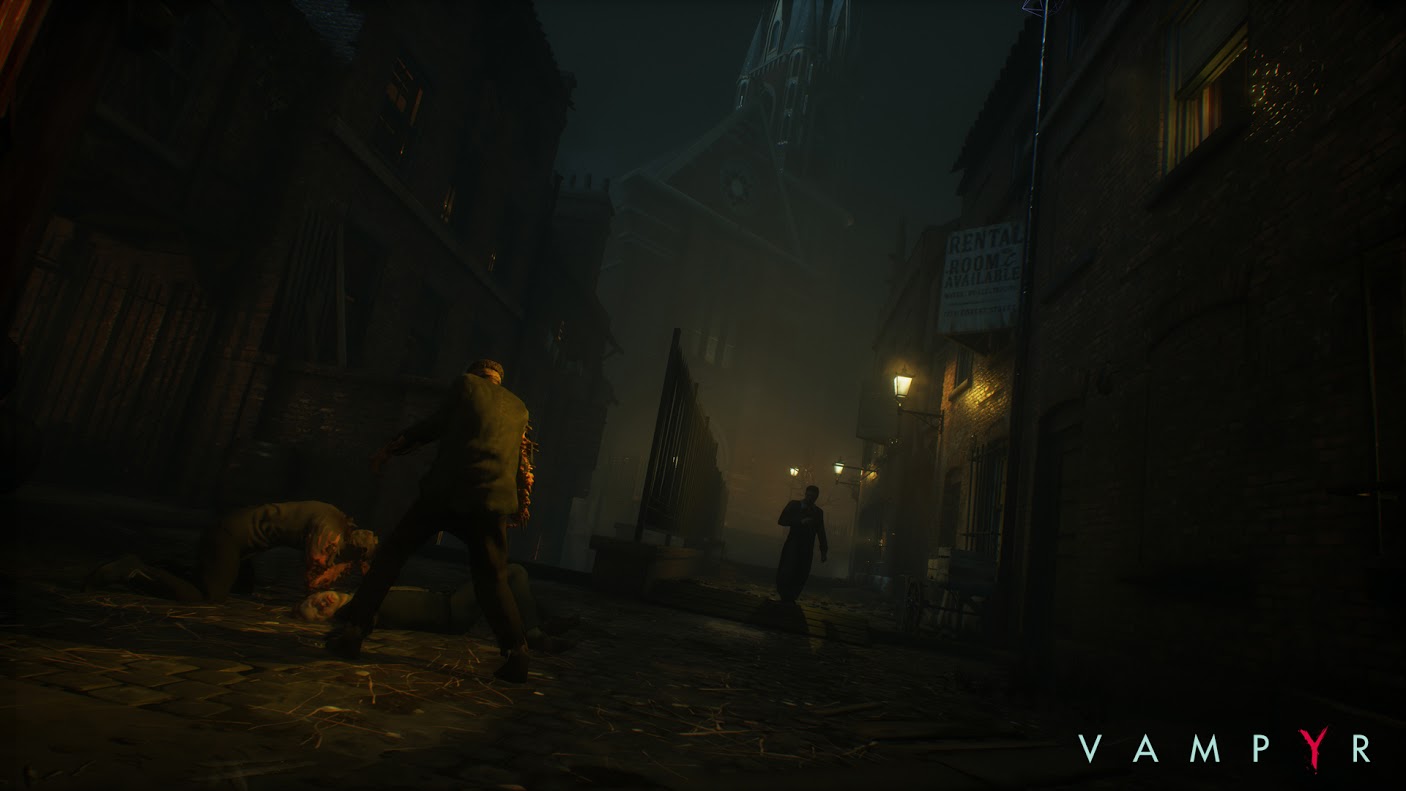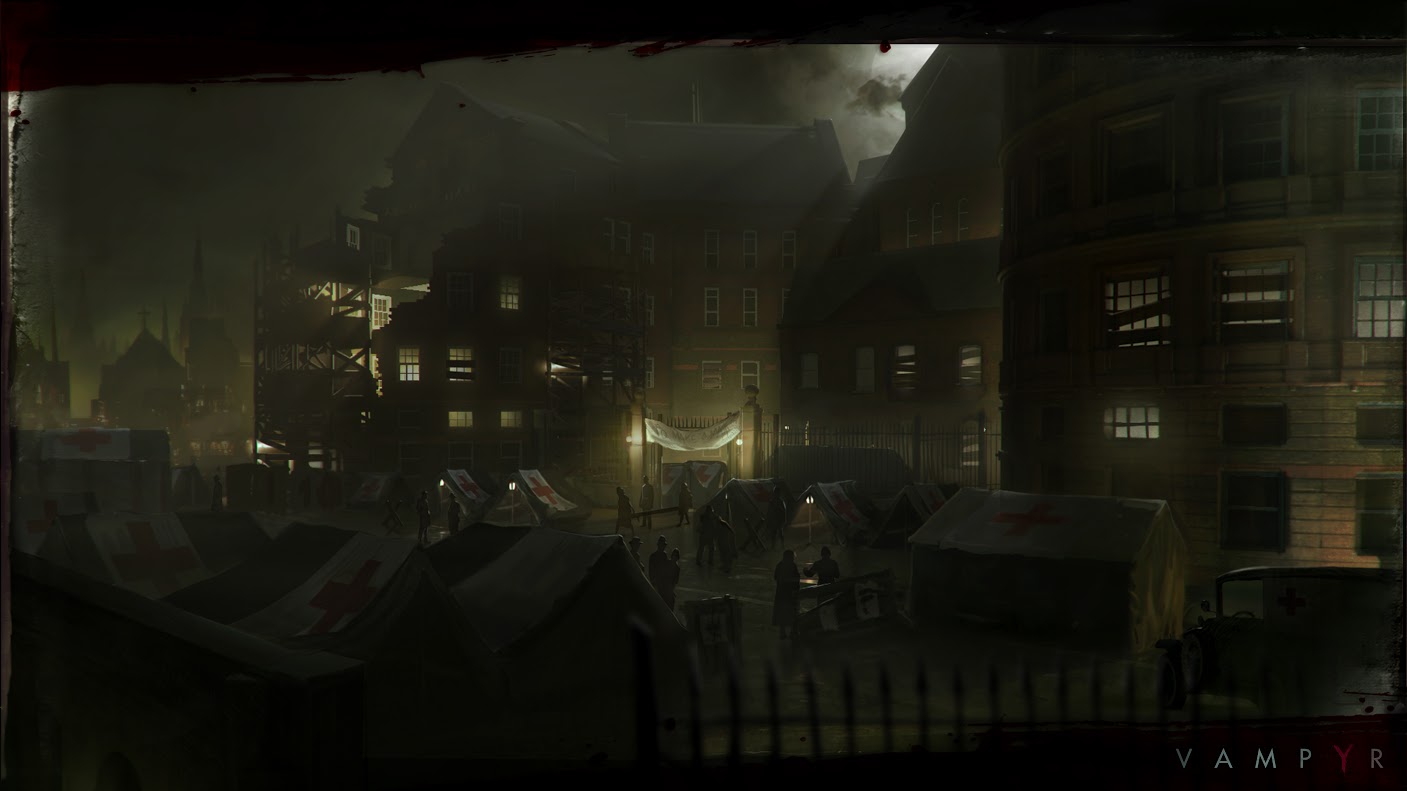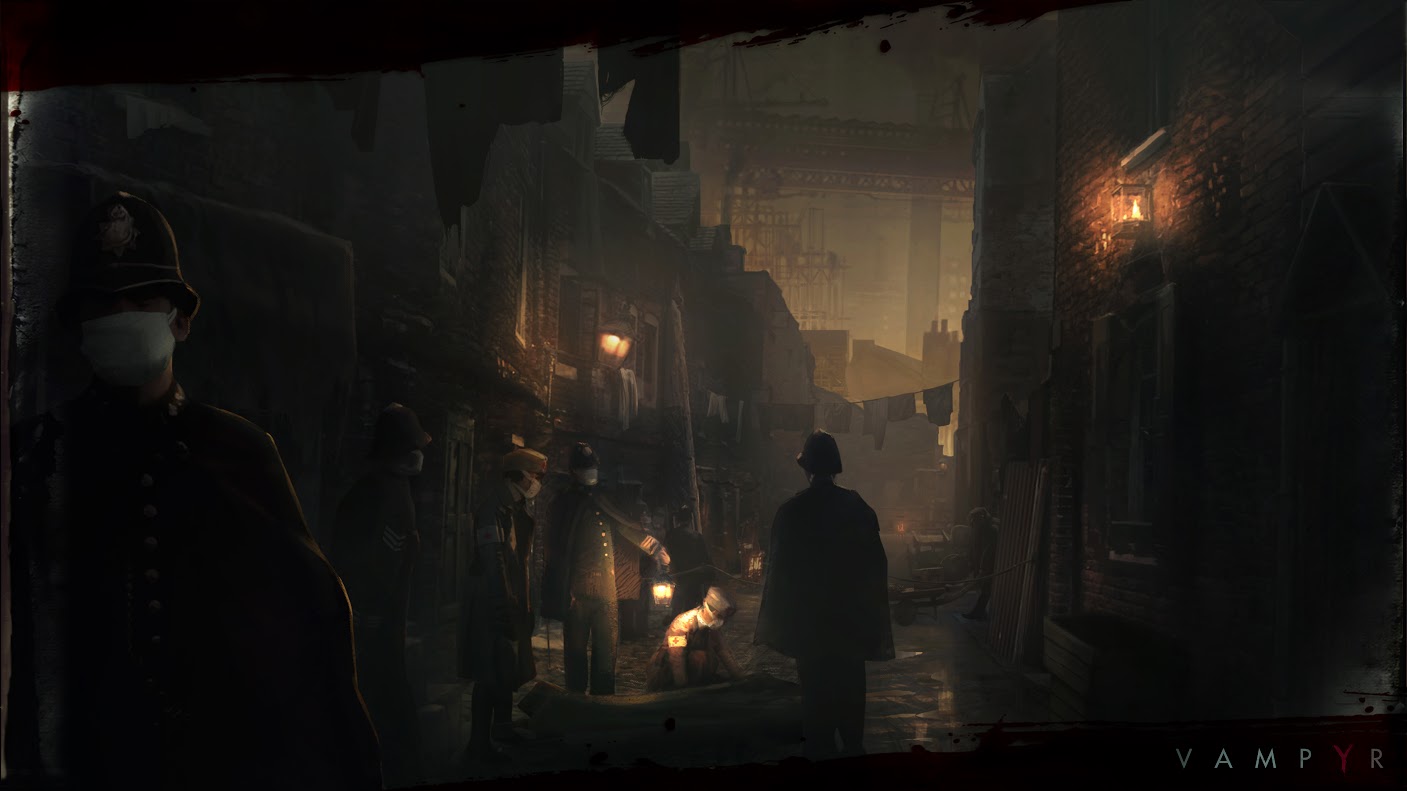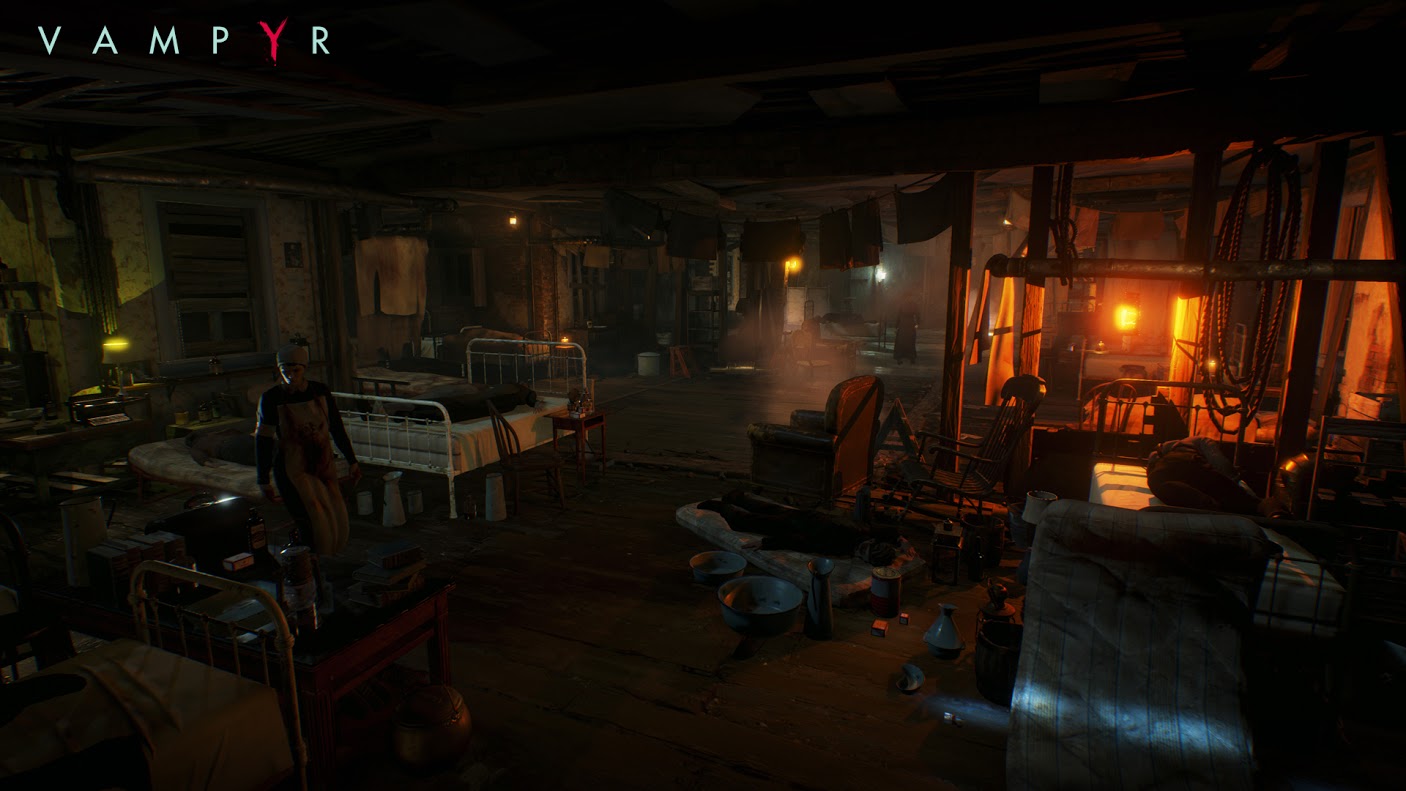Unlife is strange in Vampyr

The developers at Dontnod definitely don’t want to be pigeonholed. Moving from near-future Parisian cyborgs (Remember Me) to 1980s American teenagers (Life is Strange) was one thing—but a Spanish Flu-ridden London in 1918 is a bigger departure. And focusing a talky RPG on a very traditional reading of vampirism is moving further into the realms of cheese than they normally attempt.
In Vampyr, you play the part of Jonathan Reid, a high-ranking doctor turned into a vampire against his will. Freshly risen from a mass grave, he explores a London wracked by the lethal Spanish Flu and by another, more insidious vampiric plague. “One side of him is a man of science who wants to heal London’s suffering,” says Philippe Moreau, game director. “The other side is a creature of the night compelled to take lives to survive.”

Of course, Assassin’s Creed: Syndicate has recently visited London and particularly Whitechapel, recreating it with the pernickety preciseness that only a trillion developers can manage. Dontnod is not interested in that challenge—instead their London has familiar landmarks stitched together by the sort of dark urban wasteland that made Dishonored and Bloodborne work so well. You’ll travel between the poverty- and plague-ridden Whitechapel, the docks, the city and more. “It’s a gothic city—it’s perfect for a vampire story,” says Grégory Szucs, the art director.
Watching the game in action, the lovable Cockney core is the community in each area. Every human character you encounter has their own personality, stories, job, relationships, and issues—and roughly eight pints of tasty blood. As Reid wants to maintain his medical cover and discover the origins of his vampirism, he won’t kill anyone out in the open, but if he can lure them away to a dark corner (using his Seduce power) he’ll drain them dry, and the in-game newspapers will report another body found the following morning, breaking the hearts of their family.
In our demo, I was witness to an argument between a pissant soldier and cockney lad, the alcoholic trooper firing off his pistol wildly whilst accusing the boy of stealing his ‘medicine’. Using the Seduce power during dialogue forced the soldier to reveal the source of his medicine—an apparently useful plot point—as well as weakening him enough that I could whisk him away for a quick donation, if I chose to. Considering the authentically racist nonsense he was spouting, it was tempting.
Choosing who to kill and who to spare will affect the story in subsequent days.
Draining fresh humans is attractive (In the game! - Murder Ed) because it’s the easiest way to get the experience to improve your vampiric powers. There are three in-game skill trees, which give a variety of passive and active abilities. For example, you start with the spring power, allowing you to jump great heights, but it can be upgraded to do damage on impact or grant temporary invulnerability.
You can also get XP from killing the zombie-like lesser vampires and from completing quests—but every human is a Little Sister here. Choosing who to kill and who to spare will affect the story in subsequent days. Kill no-one and you’ll struggle through the rest of the game without XP. Kill too many, or too many pillars of the community, and the district will just fall apart. “It’s the Dark Side of the Force—it’s easier that way. It’s not good, it’s not bad—you’re a vampire, it’s your nature,” says narrative director Stéphane Beauverger.
Keep up to date with the most important stories and the best deals, as picked by the PC Gamer team.

Not everyone is a part of the community, though, particularly not other vampires. They come in a wide range of forms, from the well turned, like Reid, to plain ugly zombie-vampires (which are fair game) in the plague districts, to wilder varieties. The Dontnod team told me that they’ve come up with a wide variety of vampire types to cram into their bestiary, as well as humans and vampire hunters to battle, and they haven'ttaken every vampire trope onboard.
“It’s such a huge archetype, there are many, many versions of this creature.” says Szucs. “Does holy water affect him? Can he enter a house without invitation? Does he shine under the sun?” (After extensive questioning, I can confirm that these vampires do not sparkle.) “We have to create all the rules, then decide where they came from.” The team also has to avoid the undead elephant in the room, the Vampire: The Masquerade series, which has trod much of this ground already.

Though combat in the game is suitably gutsy and bloody, I have to admit to some qualms. First, the close proximity of large numbers of fast-moving homicidal vampire-zombies to somehow-unconcerned citizens is slightly unbelievable. Second, the place of combat in the game whatsoever seems unnecessary—it feels like the game would be more interesting without it.
Still, at least having combat justifies the game’s odd crafting system, which sees Jonathan scavenging the bodies of the dead or bartering with merchants to acquire the elements for strange weapons such as a wooden medical saw—unusually useful against vampires, who really don’t like splinters.
And, alongside the monsters, the populace are facing the real enemy: the Flu itself, that killed doctors and policemen first, and left the city in such disarray. It’s a forgotten time in London’s history, and with Dontnod’s signature strangeness and this populist undead theme, Vampyr could be a Prince of the Night.

